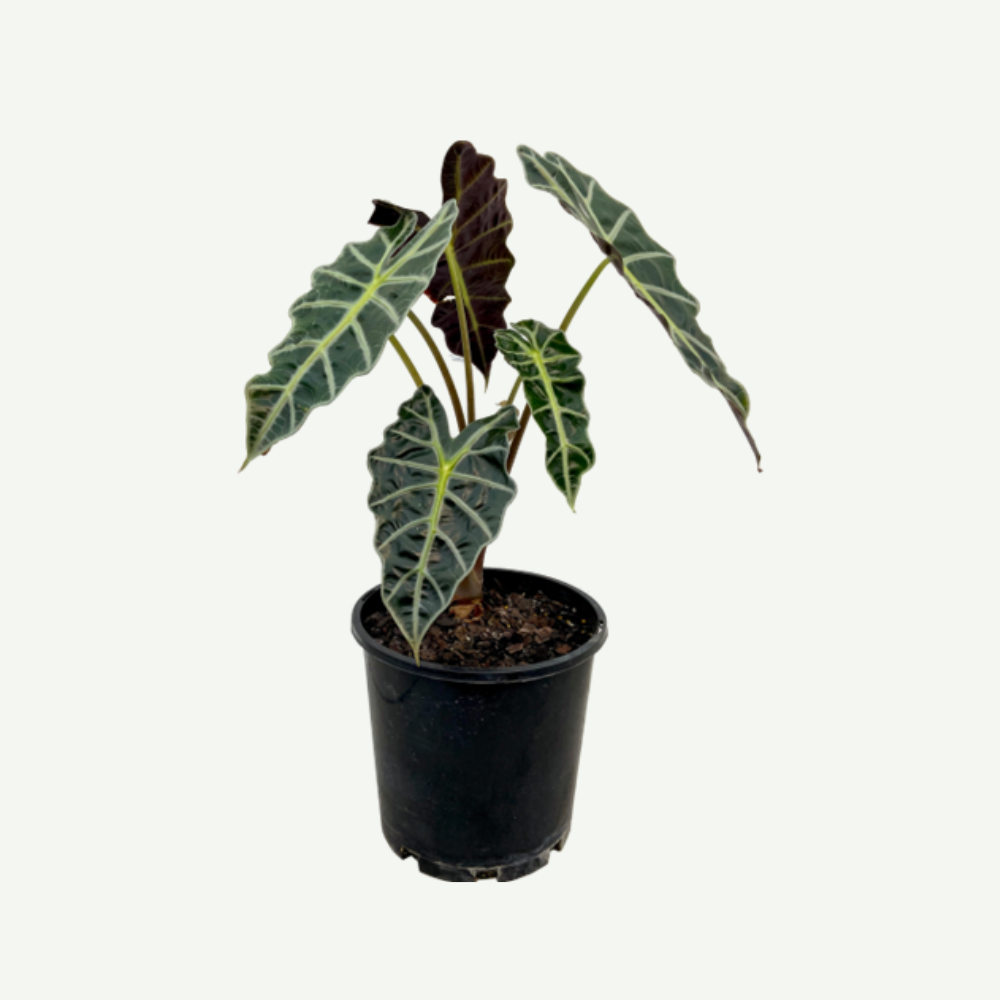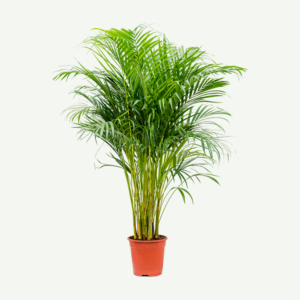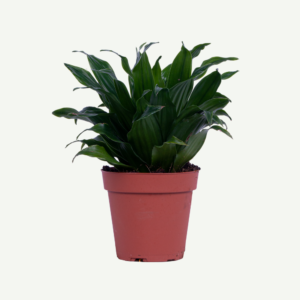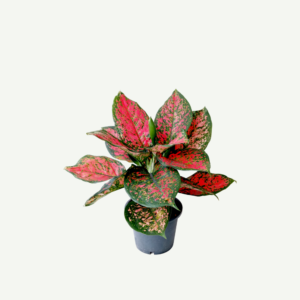Alocasia Polly, also known as African Mask Plant or Elephant Ear. It is a popular and striking houseplant known for its distinctively shaped, glossy, and dark green leaves with contrasting white veins, resembling an African mask.
Care of Alocasia polly :
Light Requirements : Provide bright, indirect light for this plant. Avoid placing it in direct sunlight, as intense sunlight can scorch the leaves. However, it does need a good amount of light to thrive.
Temperature : This Plant prefers temperatures between 65°F to 80°F (18°C to 27°C) and is sensitive to cold drafts. Avoid exposing it to temperatures below 60°F (15°C).
Humidity : This plant thrives in higher humidity levels, making it suitable for placement in a bathroom or near a humidifier. Regular misting can also help increase humidity around the plant.
Watering : Keep the soil consistently moist but not waterlogged. Allow the top inch of the soil to dry slightly before watering again. Be careful not to let the plant sit in water, as it can lead to root rot.
Soil : Use a well-draining and rich potting mix that retains some moisture without becoming waterlogged.
Fertilizer : Feed This Plant with a balanced, water-soluble fertilizer diluted to half strength during the growing season (spring and summer) every 2-4 weeks. Reduce or stop fertilizing in the winter months when growth slows down.
Potting and Repotting: Repot the plant every year or two, preferably during the spring, into a slightly larger container to accommodate its growing size.
Characteristics of Alocasia polly :
Appearance : This Plant has arrow-shaped leaves with a unique pattern of white or silvery veins on the dark green foliage. The leaves grow on long, upright stems, and the plant can reach a height of around 1 to 2 feet (30 to 60 cm) indoors.
Indoor Plant : This Plant is primarily grown as an indoor houseplant due to its tropical origins and sensitivity to cold temperatures.
Toxicity : This Plant is toxic to pets and humans if ingested, so keep it out of reach of curious pets and children.
This Plant is admired for its stunning foliage and makes an excellent statement piece for indoor spaces. It requires some attention to detail regarding its care, especially concerning humidity and watering, but with the right conditions, it can thrive and add a touch of tropical beauty to your home or office.
Landscape use of Alocasia polly :
- Shaded Garden Beds : In regions with a mild and tropical climate, This Plant can be planted in shaded or semi-shaded garden beds. Its bold, arrowhead-shaped leaves with prominent veining add a touch of exotic beauty to shaded garden areas.
- Container Gardens : This Plant is well-suited for container gardening. You can place it in large pots or decorative containers and use it as a focal point or accent plant on patios, decks, or in courtyard gardens.
- Understory Plant : In gardens with taller trees and shrubs, This Plant can be used as an understory plant. It can add lush, tropical vibes to the lower layers of the garden, especially in areas with filtered light.
- Tropical Garden Theme : If you have a tropical garden theme, This Plant can play a significant role in enhancing the exotic ambiance. Pair it with other tropical plants like ferns, orchids, and bromeliads to create a lush tropical paradise.
- Sheltered Outdoor Spaces : This Plant can be placed in covered or sheltered outdoor spaces, such as verandas, lanais, or gazebos. These areas provide the necessary protection from harsh weather conditions while allowing you to enjoy the unique foliage outdoors.
Conclusion:
Keep in mind that Alocasia Polly is native to tropical regions and thrives in a warm, humid, and sheltered environment. If you plan to use it outdoors in regions with cooler or unpredictable climates, consider placing it in pots or containers that can be moved indoors during adverse weather conditions. Additionally, make sure the planting area has well-draining soil and provides protection from strong winds and excessive sun exposure, as it prefers dappled or indirect light






